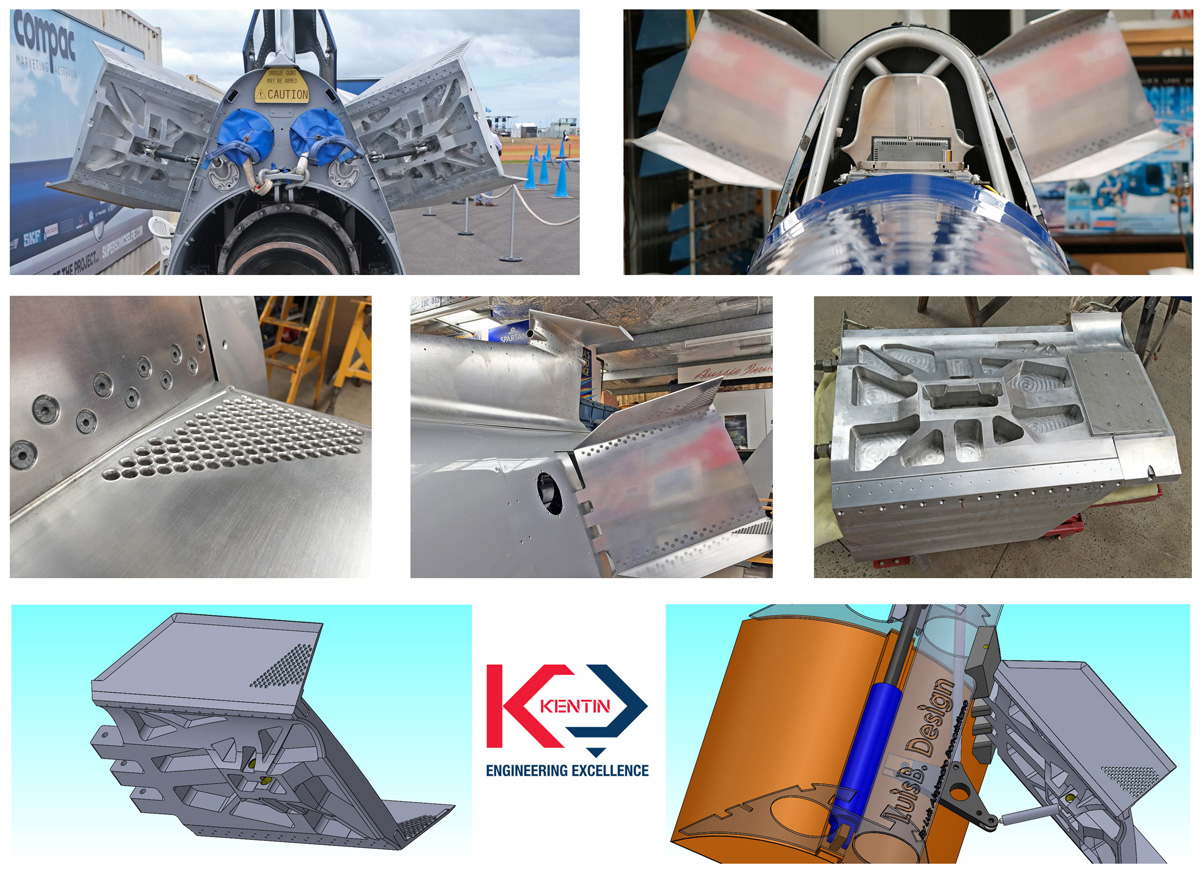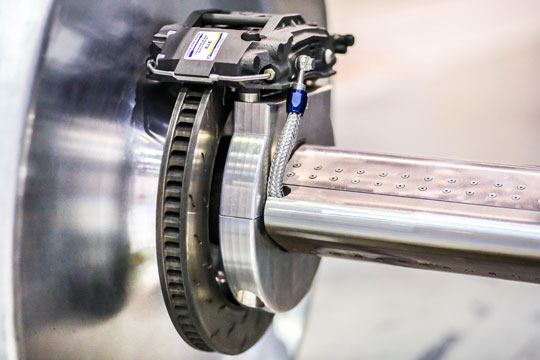Stopping a 1000 MPH Car
The reason it takes so long to stop Aussie Invader 5R is that if we were to shut the engine off at 1000 mph, the car and driver would immediately experience a massive negative G. This could cause the wheels to lose traction and almost certainly the car would start to slide. It would also be a massive problem for the driver, who would certainly quite likely black out. So, we have to slow the car safely and in a controlled manner, using three braking methods, and possibly a fouth in an emergency situation.
The first phase is putting the engine into a controlled shutdown. This will throttle the engine down slightly and transition the car into its braking phases. Air resistance is the first phase and this will slow the car rapidly. It will also allow the cars wheels rotation to stay in sync with the cars slowing mainframe.
1. The Air Brakes
The first braking system is our hydraulic air brakes. These are situated behind the driver at the rear of the car. They are either side of the car and are deployed at about 1225 km/h (760 mph) once the driver shuts down the engine. The air brakes take about four seconds to deploy fully, and by the time they are fully “open,” the car will be slowing quickly.
At those speeds, the air brakes will experience about 7 tonnes of force. Their job is to disrupt the airflow and rapidly slow the car to under 960 km/h (600 mph) so the parachutes can be deployed.
The air brakes’ design is unique to the Aussie Invader 5R. The series of holes on the lower fin edge of each air brake, known as “disruptors,” increase the efficiency over conventional air brakes by about 30 percent.

2. High & Low Speed Chutes
The second braking system on our car are the two parachutes which are deployed to slow our car via drogue guns. The high-speed chute is deployed at around 600mph (960 km/h) into the air stream behind our car, this chute slows and stabilizes our car by “tugging” very hard and straighten her up if necessary.
Once the car decelerates to about 400 mph (640 km/h) we will deploy the low-speed chute is then deployed again by an explosive charge, slowing the car further.

3. High Speed Disc Brakes
the third braking system are our high speed disc brakes, and are used once the car reaches about 200 mph (320km/h). The high-speed disc brakes fitted to the rear wheels, have 6 pot calipers, and will bring the car to a complete stop.
We are looking at a clutch system to stop the discs from being spun when the car reaches very high speeds and the wheels are rotating above 3,000 RPM. When these speeds are reached the disc rotors will disengage. However, this system is under review and has not been developed yet.

4. Emergency Brake
The final braking system is a last resort and only used if one or more of the other braking systems fails to deploy or malfunctions. This is known as our “Fred Flintstone” brake and is a hydraulic steel ram with a flat metal plate (foot) on the end of it. In an emergency or “runaway” situation, it can be lowered by the driver (or remotely) and will dig itself into the ground to stop the car. It can also pick up a buried catch cable, if necessary.
Its primary use is to lift the front of the car for maintenance and when the car is being turned around, but can be deployed as a fail-safe measure.